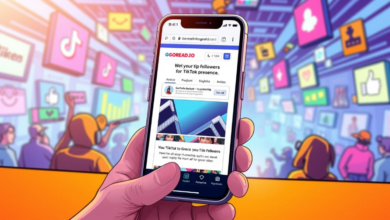How AI Is Changing Graphic Design With Text-To-Image Features

AI is transforming graphic design through innovative text-to-image features. These advancements allow designers to generate visuals from simple text prompts, streamlining the creative process. The implications of this technology extend beyond efficiency, democratizing access to design tools for a wider audience. As AI continues to evolve, its impact on creativity and the design landscape raises important questions about the future of visual communication and the role of human input in this rapidly changing field.
The Evolution of Graphic Design: From Traditional to AI-Powered Tools
As graphic design has evolved over the decades, it has seamlessly transitioned from traditional methods to the integration of AI-powered tools, revolutionizing the creative landscape.
Historical influences shaped design techniques, offering a foundation that informed contemporary practices. This shift enables designers to explore innovative possibilities, enhancing creativity while streamlining workflows.
Ultimately, this grants them the freedom to push boundaries and redefine visual communication.
See also: How to Improve Video Quality With Editing Software
Understanding Text-to-Image Technology
Text-to-image technology represents a significant breakthrough in the field of graphic design, enabling artists and designers to generate visual content directly from textual descriptions.
This innovative approach relies on advanced algorithms that facilitate image generation through semantic understanding of language. By interpreting user-defined prompts, this technology empowers creators, offering unprecedented freedom to visualize concepts that were once limited by traditional design methods.
Benefits of Using AI in Graphic Design
The integration of AI into graphic design offers numerous advantages that enhance creativity and efficiency.
AI efficiency streamlines workflows, allowing designers to focus on innovative concepts rather than mundane tasks.
Furthermore, design accessibility is significantly improved, as AI tools enable individuals with varying skill levels to produce high-quality graphics.
This democratization empowers a broader demographic to engage in creative expression, fostering a more inclusive design landscape.
The Future of Creativity: AI’s Role in Design Innovation
A transformative shift is underway in the realm of graphic design, driven by the integration of artificial intelligence. This evolution fosters creative collaboration while raising important questions about design ethics.
- The fusion of human intuition and AI precision
- The democratization of artistic expression
- The challenge of maintaining authenticity in a digital age
These factors shape a future rich with innovation and possibilities.
Conclusion
In conclusion, the integration of AI-powered text-to-image features is not merely transforming graphic design; it is igniting a creative revolution that redefines the very essence of visual storytelling. As designers harness this groundbreaking technology, they unlock limitless potential, enabling them to conjure images from mere words with unparalleled precision and speed. This fusion of human imagination and artificial intelligence is poised to propel the industry into an era where creativity knows no bounds, forever altering the landscape of design.




